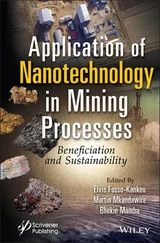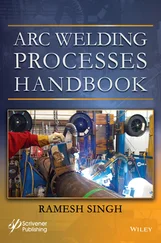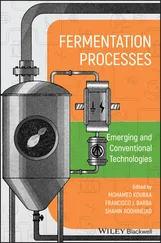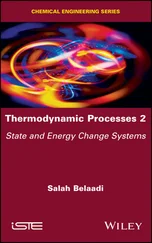1.4.1. The Soret Coefficient
As mentioned in Section 1.2, the flux equation for a component i in a system that is inhomogeneous in both concentration and temperature can be represented by a pseudo‐binary equation
(1.8) 
where  is the effective binary diffusion coefficient of i in a mixture of components i and j , ρ is the density of the mixture, X iand X jare the mass fractions of i and j , and σ iis the Soret coefficient. In a steady state J i= 0 and the Soret coefficient becomes
is the effective binary diffusion coefficient of i in a mixture of components i and j , ρ is the density of the mixture, X iand X jare the mass fractions of i and j , and σ iis the Soret coefficient. In a steady state J i= 0 and the Soret coefficient becomes  . Lesher and Walker (1986) determined Soret coefficients for the major components of silicate liquids using an approximate version of σ idetermined as
. Lesher and Walker (1986) determined Soret coefficients for the major components of silicate liquids using an approximate version of σ idetermined as  , where
, where  is the average mass fraction of i in the starting composition of their experiments.
is the average mass fraction of i in the starting composition of their experiments.
1.4.2. Soret Isotope Fractionation in Silicate Liquids
The importance of laboratory experiments documenting kinetic isotope fractionation by temperature differences in silicate liquids is not so much because of potential applications to geologic problems (see reference to Bowen later in this section), but rather that certain features of the isotopic fractionation of samples recovered from piston cylinder experiments appear to have been significantly affected by thermal effects. A possible example of this was already noted in connection with the 44Ca/ 40Ca fractionation of about 3‰ in the basaltic part of the RB‐2 diffusion couple shown in Fig. 1.4. The suggestion that this “unexpected” isotopic fractionation might be the result of thermal isotope fractionation prompted the quantitative question of whether a few tens of degrees of temperature difference, which Watson et al. (2002) had shown was common for samples run in a piston cylinder apparatus, can explain isotopic fractionations of several per mil. This question was addressed in a series of experiments by Richter et al. (2008; 2009b; 2014a) that quantified the isotope fractionation of all the major elements, plus lithium and potassium, by a sustained temperature difference across a basalt melt.
The thermal isotope fractionation experiments by Richter et al. (2008; 2009b; 2014a) were run in piston cylinder assemblies like the one shown schematically in Fig. 1.5, except that the sample was initially a homogeneous basalt melt that was intentionally offset from the hot spot of the piston cylinder assembly (as shown schematically in Fig. 1.7) in order for there be a temperature difference of about 150°C across the basalt. Fig. 1.8shows the results of two such experiments from Richter et al. (2008) in terms of the steady‐state distribution of the MgO and SiO 2, and the isotopic fractionation of magnesium, as a function of the local temperature. Other experiments by Richter et al. (2009b; 2014a) showed that CaO and FeO, like MgO, migrate to the cold end, Al 2O 3remains relatively unchanged, while SiO 2, K 2O, and Na 2O become enriched at the hot end. The Soret coefficients derived from the three Richter et al. experiments are not significantly different from what had been previously reported by Lesher and Walker (1986). However, the main objective of the Richter et al. studies was not the Soret coefficients per se but rather to determine the thermal isotope fractionation of elements in a basalt melt.
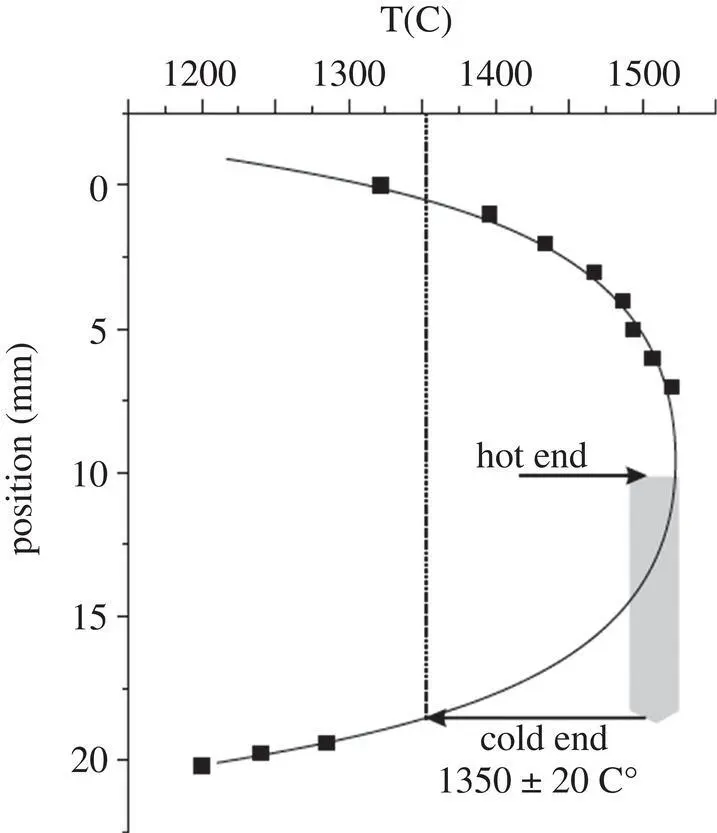
Figure 1.7 The black squares in this figure show the temperature derived from the spinel thickness at places above and below the molten basalt (shown schematically by the grey rectangle) where MgO and Al 2O 3were in contact in the piston cylinder assembly used by Richter et al. (2008) for Soret experiment SRT4. The temperature profile shown by the thin black line was fit to the spinel‐thickness temperature data points and extrapolated into the sample based on temperature measurements that Watson et al. (2002) had previously made in a sample run in a similar piston assembly.
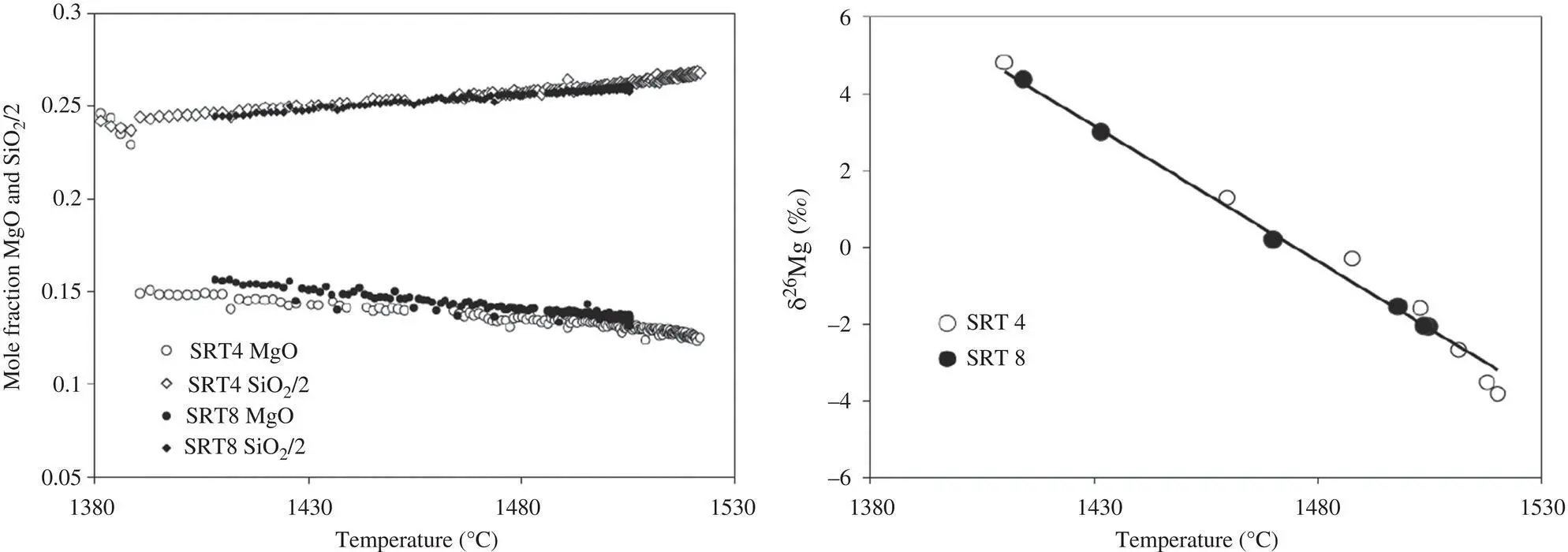
Figure 1.8 The panel on the left shows the steady state distribution of the mole fraction of MgO and SiO 2as a function of temperature in glass recovered from two Soret experiments (SRT4 and SRT8) from Richter et al. (2008). Note that the mole fraction of SiO 2/2 is plotted, not SiO 2. The panel on the right shows the magnesium isotopic fractionation as function of temperature from the two experiments.
Figure taken from Richter et al. (2008).
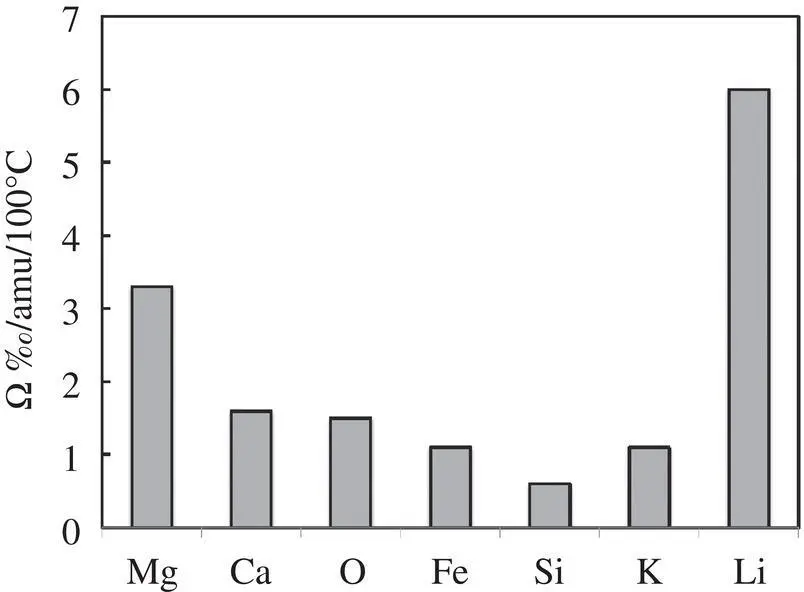
Figure 1.9 Thermal fractionation of isotopes of the listed elements in molten basalt in terms of the parameter Ω defined as per mil per one atomic mass unit difference of the isotopes per 100°C. In every case the heavy isotope migrated to the cold end of the sample.
The Soret experiments run by Richter et al. (2008; 2009b; 2014a) were to determine the degree to which a sustained temperature difference across molten basalt fractionates the isotopes of the major elements and alkali elements. Fig. 1.9summarizes the results in terms of a thermal isotope fractionation parameter Ω defined as the per mil fractionation per unit atomic mass difference between the isotopes per 100°C temperature difference. The thermal isotope fractionation of calcium by Ω Ca=1.5‰/amu per 100°C makes it likely that the “unexplained” positive fractionation of 44Ca/ 40Ca in the basalt side of experiment RB‐2 (see Fig. 1.4) resulted from the temperature at the basalt end of the diffusion couple having been several tens of degree colder than in the middle of the sample. A more explicit example of how thermal isotope fractionations associated with known temperature differences can account for the isotopic data measured in materials recovered from a piston cylinder diffusion experiment was shown in Fig. 1.6.
The degree of elemental and isotopic fractionation associated with a difference in temperature depends in part on how long the temperature difference is maintained. The fraction of the full steady state separation achieved as a function of time was given by Tyrell (1961) as 1 − e −t/ θ, where θ = L 2/ Dπ 2, D is the effective binary diffusion coefficient of the chemical specie, and L is a measure of the distance over which the temperature difference was maintained. In a piston cylinder experiment a steady state can be realized because the temperature difference is maintained for as long as necessary by the graphite heater surrounding the sample. The situation in natural settings is very different as Bowen (1921) recognized early on when he wrote “… when we realize that the diffusivity of mass is, according to our determinations, from 10,000 to 100,000 times smaller than the diffusivity of temperature in rocks, it is apparent that the temperature of any igneous body will fall too rapidly to allow sufficient time for the Soret phenomenon to manifest itself.” The only potential exception to Bowen’s assertion that I have been able to come up with involves effects across a double‐diffusive boundary in a layer magma chamber where a long‐time average temperature difference is maintained by the recurring stripping away and reforming of the thermal boundary layers. The interested reader will find model calculations and discussion of isotopic fractionation across a doubly diffusive boundary layer in Richter et al. (2009b).
Читать дальше


 is the effective binary diffusion coefficient of i in a mixture of components i and j , ρ is the density of the mixture, X iand X jare the mass fractions of i and j , and σ iis the Soret coefficient. In a steady state J i= 0 and the Soret coefficient becomes
is the effective binary diffusion coefficient of i in a mixture of components i and j , ρ is the density of the mixture, X iand X jare the mass fractions of i and j , and σ iis the Soret coefficient. In a steady state J i= 0 and the Soret coefficient becomes  . Lesher and Walker (1986) determined Soret coefficients for the major components of silicate liquids using an approximate version of σ idetermined as
. Lesher and Walker (1986) determined Soret coefficients for the major components of silicate liquids using an approximate version of σ idetermined as  , where
, where  is the average mass fraction of i in the starting composition of their experiments.
is the average mass fraction of i in the starting composition of their experiments.





